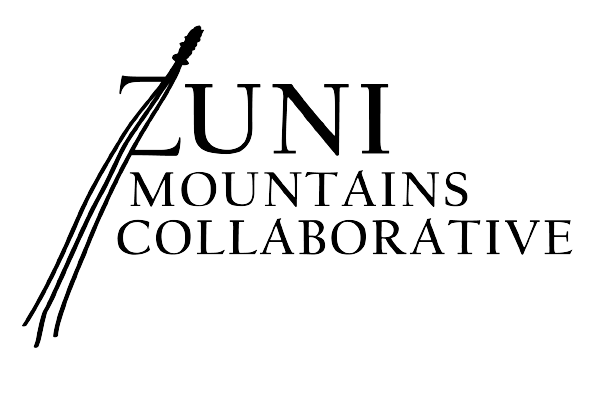Greetings, all!
During the first week of May, as spring transitioned into the early days of summer on the Cibola National Forest, the Mt. Taylor Ranger District led a broadcast burn within the Zuni Mountains Collaborative Forest Landscape Restoration Program area. The Forest Stewards Guild was able to support the burn via a companion CFRP project.
U.S.F.S. burn boss observes smoke movement.
Through the collaborative efforts of the United States Forest Service, the Guild, and Bernalillo County Fire Department, dozens of fire-qualified individuals and other partners and observers came together to return fire to 1,900 acres off Forest Road 480. This acreage is referred to as the Copperton Block, part of the larger Redondo Prescribed Burn planned and ecologically monitored by the Forest Service.
The Copperton effort was made possible by hand crews, hotshots, and a helicopter module (helitack) who ignited the fire and monitored the surrounding landscape to ensure that no flames were able to escape and move beyond the confines of the planned project area. Other resources transported fuel, moved water tanks around the perimeter of the burn, and monitored fire effects. The collective objective - of this burn and other ongoing efforts of the CFLRP - is to restore ponderosa pine ecosystems and their function in the Zuni Mountains. The Guild has been a partner in meeting this objective for over 15 years and continues to play an important role, coordinating amongst collaborators to ensure restoration work happens on the ground.
Bernalillo County Fire supports the Rx burn and receives a training assignment.
Sandia Helitack gives a tour of the helicopter to NMSU Rx fire specialist Dr. Doug Cram.
Prescribed burning, and managed wildfire where appropriate, is an effective landscape management tool. It helps land managers meet resource objectives, including reducing heavy loads of flammable woody material to reduce the risk of catastrophic wildfire, improving watershed health and wildlife biodiversity through habitat recovery, and managing smoke for community wellbeing. The fire is generally low-intensity, meaning that flame lengths are short, the fire creeps and burns fine and medium fuels as it moves, and there is minimal mortality to the surrounding trees. As Mt. Taylor Ranger District reminds us, “A healthy forest is a resilient forest that undergoes fire occurrences on a regular basis.”
To read more about the success and partnership of the Copperton Prescribed Burn, check out the Copperton Rx FEMO Report authored by Kodi Leslie of the Mt. Taylor Hotshots and Eytan Krasilovsky of the Forest Stewards Guild. This report showcases the careful considerations and preparatory work leading up to the Copperton prescribed burn which resulted in ecologically appropriate low-intensity fire effects.
Best regards,
Rachel





